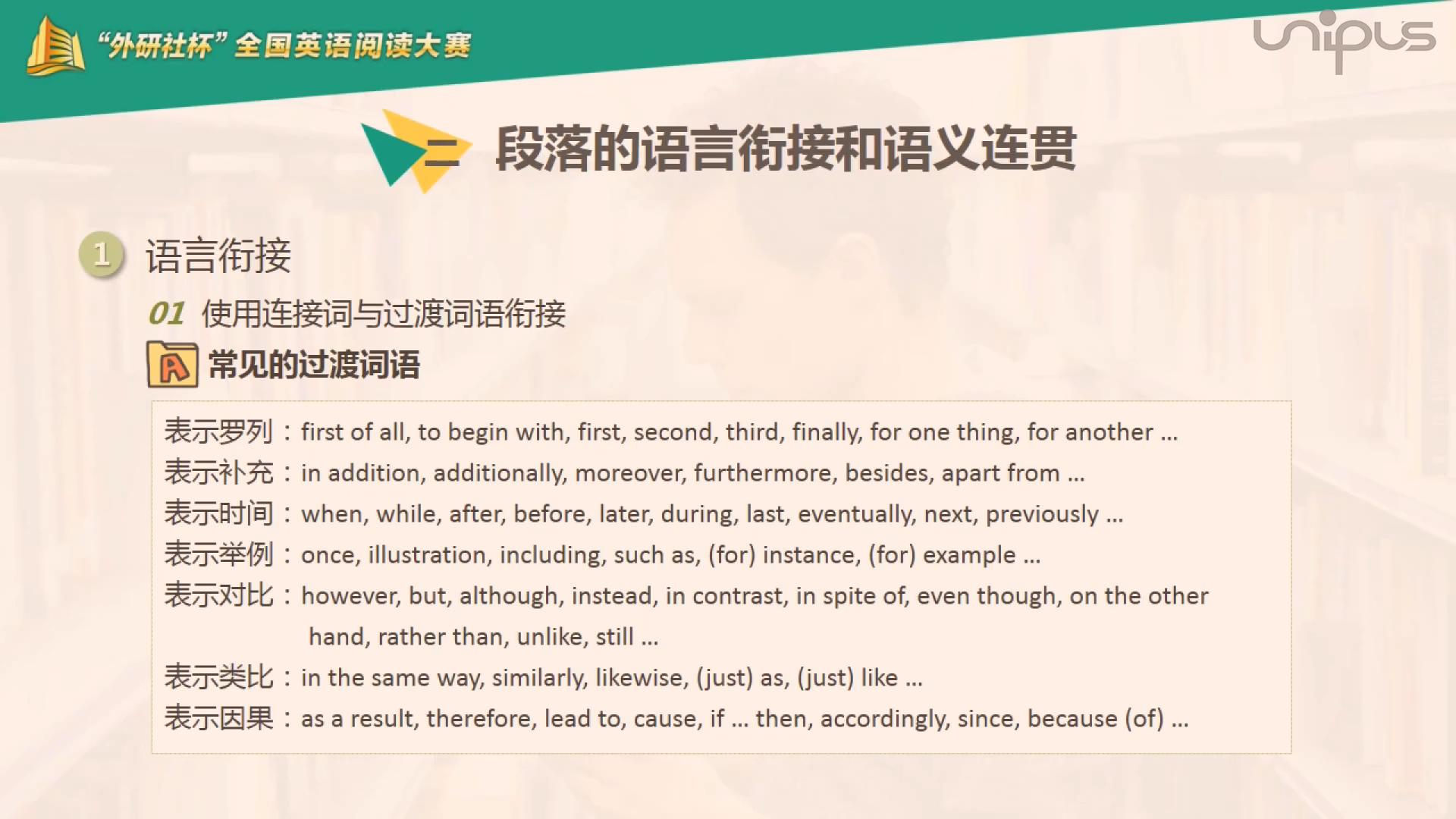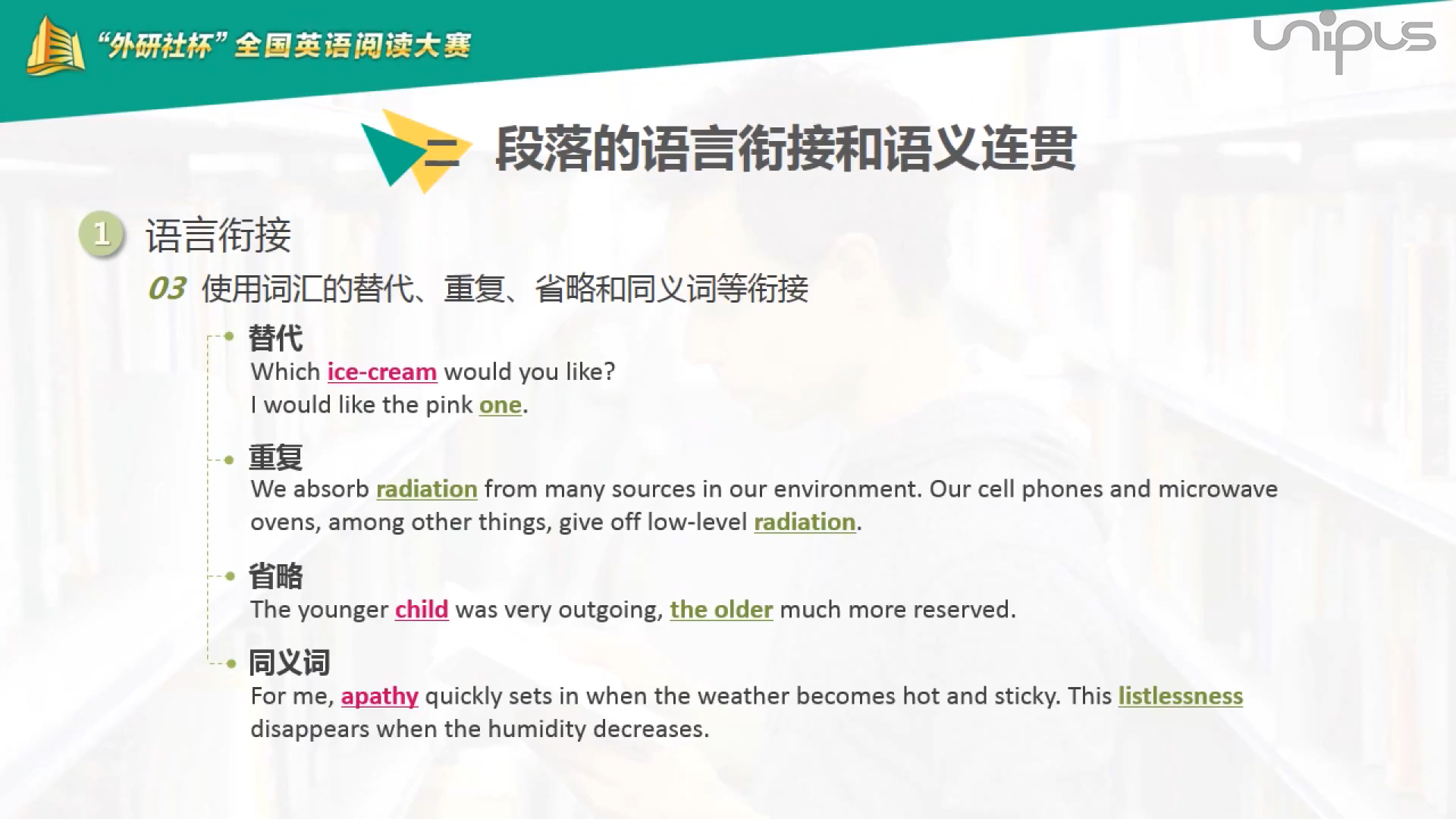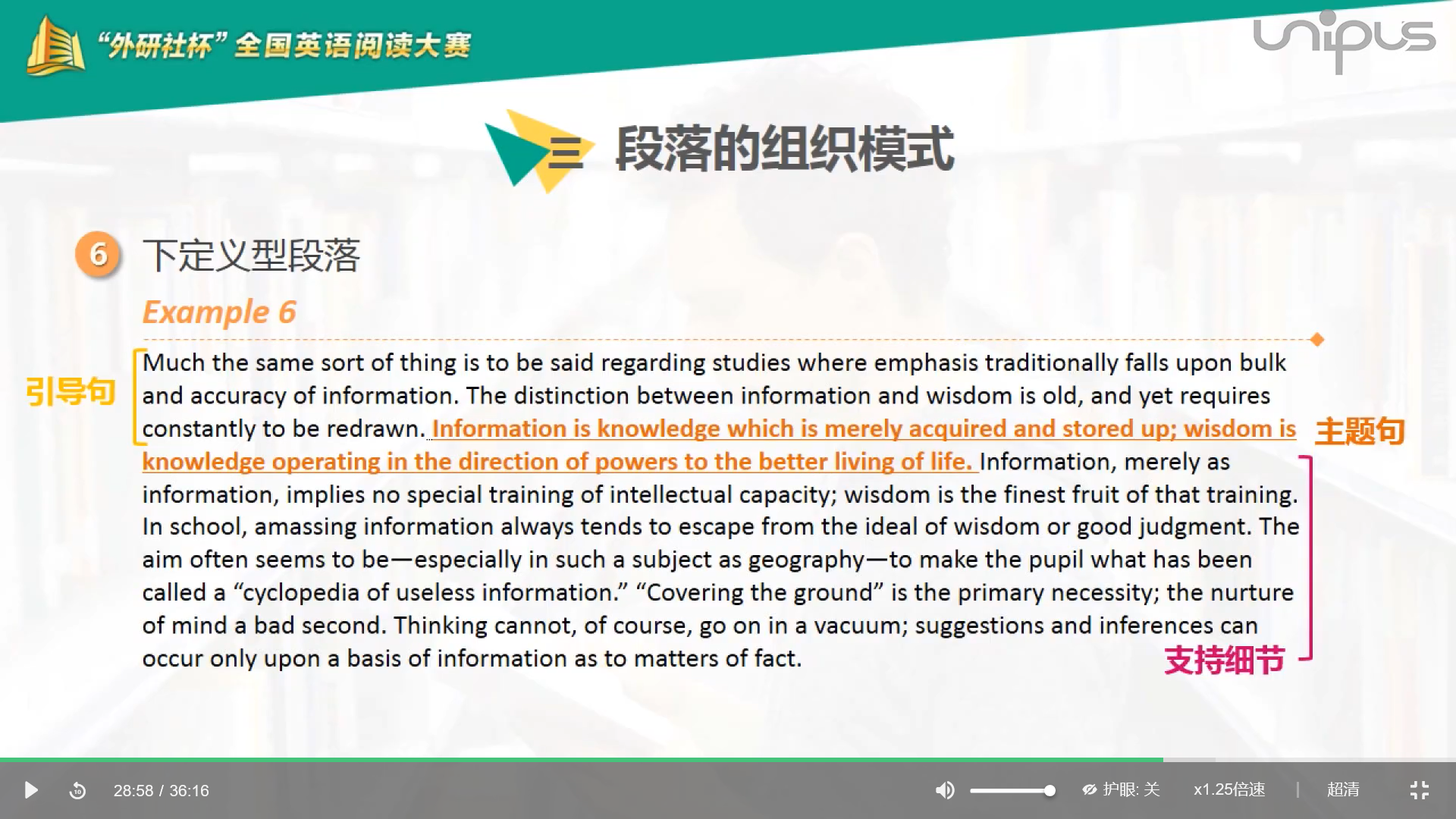一 什么是段落
一个段落由多个语句构成,主要包含一个要点。这个要点可以是阐述某个观点、描述某件事、某个过程、某个物体或某个人物
二 段落的语言衔接和语义连贯
1 语言衔接
1)使用连接词和过渡词衔接
常用连接词:and, or
常用过渡词:then, however, in fact, consequently, eventually
常见过渡词语:
表示罗列:first of all, to begin with, first, second, third, finally, for one thing, for another
表示补充:in addition, additionally, moreover, furthermore, besides, apart from
表示时间:when, while, after, before, later, during, last, eventually, next, previously
表示举例:once, illustration, including, such as, (for) instance, (for) example
表示对比:however, but, althoug, instead, in contrast, in spite of, even though, on the oter hand, rather than, unlike, still
表示类比:in the same way, similarly, likewise, (just) as, (just) like
表示因果:as a result, therefore, lead to, cause, if...then, accordingly, since, because(of)
2)使用指代衔接
3)使用词汇的替代、重复、省略和同义词等衔接
2. 语义连贯
1)要点顺序(order of ideas)
2)时间顺序(chronological order)
3)空间顺序(spatial order)
4)逻辑顺序(logical order)
三 段落的组织模式
1. 描写型段落
2. 陈述型段落
3.过程描述型段落(时间顺序)
4.列举/举例型段落
5.分类说明型段落
6.下定义型段落
7.对比/反衬型段落


 通过使用
通过使用


